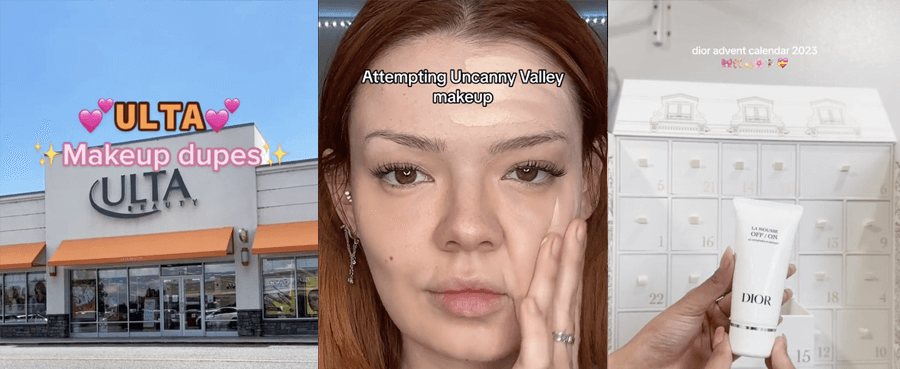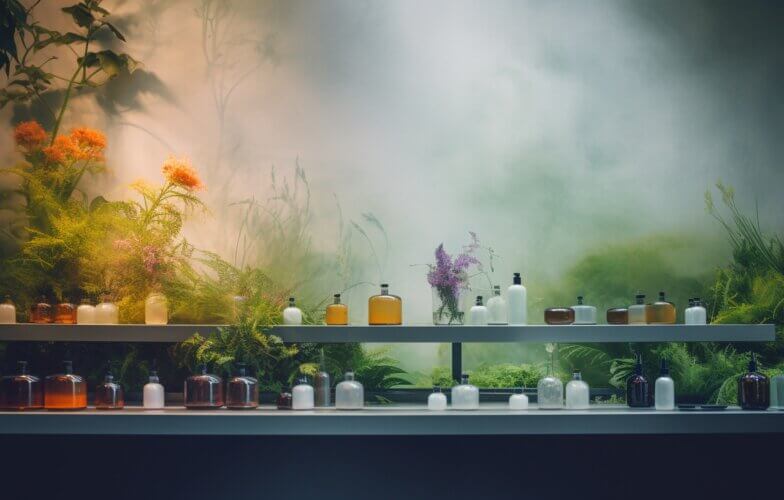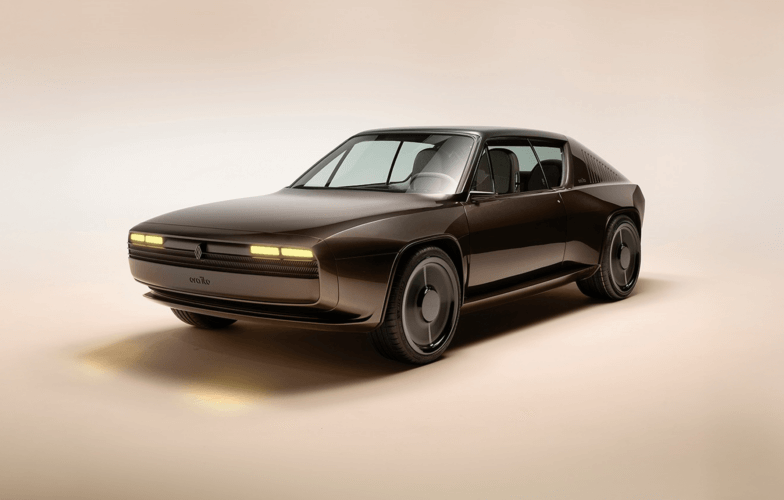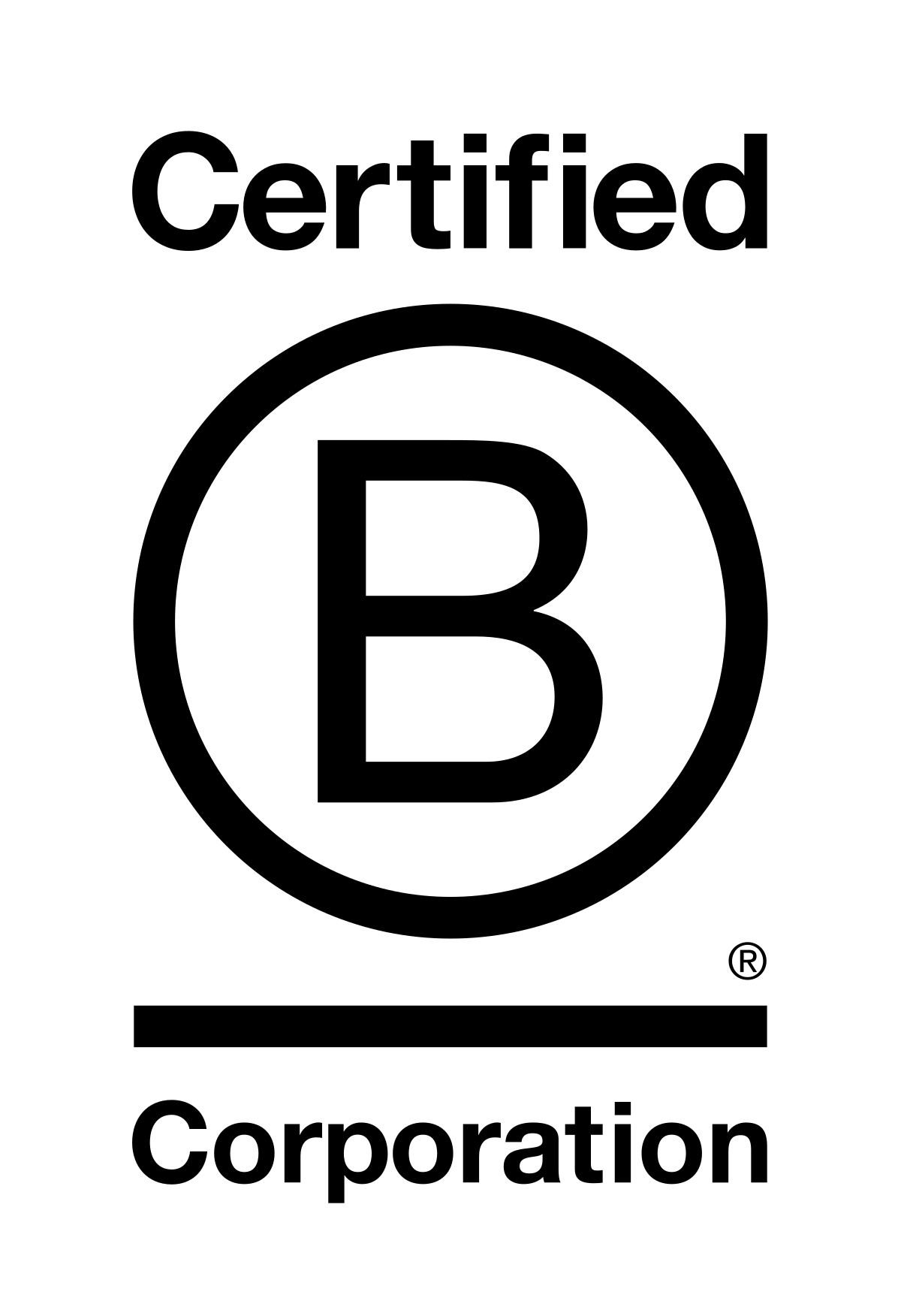
TikTok Beauty Trends - December 2023
DecodingsEach month, NellyRodi beauty experts present their selection of the most interesting trends seen on TikTok. Here’s what’s happening in December 2023!
A new look for must-have Advent calendars
Every year before the Christmas holidays, Advent calendars back their big comeback. TikTokers impatiently await their arrival (410.7 M views), making this a key product for beauty brands. With an increasing number of products on the market, the challenge is for brands to stand out in overflowing feeds, both with their packaging and the contents.
First the calendar format: Brands take advantage of the event to give their customers an exceptional product. Calendars get noticed with elaborate, impressive and visually powerful packaging – ideal for unboxing videos and showcasing each brand’s creativity. Dior, for example, chose a calendar shaped like a Haussmann-style building (13.1 M views). Charlotte Tilbury (38.9 M views) and Diptyque attract attention by taking extra care with the calendar format, which in turn strengthens the products’ perceived value. Other brands chose completely original presentations, like Nyx’s piñata or Penhaligon’s perfume bottle.
The introduction of “after calendars” is another way to innovate with format, as seen with Adopt and Nocibé, who present products chosen for the period after December.
@reigermarunbox the dior advent calendar 2023 with me 💕♬ La vie en rose (Cover Edith Piaf) – 田东昱
Next comes content: In the past, opening Advent calendars was a surprise, but now that initial function had disappeared. Thanks to the very popular unboxing videos on TikTok, influencers and viewers can analyze the brand’s product selection to find the calendar that suits them best.
For consumers, Advent calendars are an opportunity to get good deals. Brands communicate that fact by announcing the calendar’s purchase price and the total value of all the products. L’Oréal and Maybelline have taken that route with promises to only include full size products, meeting an important consumer demand following Chanel’s bad buzz in 2021.
It’s also worth noting a new trend in product selection, with some brands choosing themed calendars. For example, Garnier’s Christmask is a mono-product calendar with only facial masks. Sephora’s calendar focuses on beauty essentials.
And finally, beauty horizons are expanding to include wellbeing themes, giving brands the opportunity to diversify their calendar concepts. For example, the Vegan Box calendar is called Mindfulness Advent and gives consumers tools for personal development. There’s also an increasingly popular trend in the beauty sector targeting sexual wellbeing, as seen in the Dorcel calendar.
TikTok has made this tradition a must for brands, and Advent calendars are image opportunities to show off labels’ creativity and positioning in order to meet increasingly specific needs.
@larasperanza Quale maschera chiederete a Babbo Natale?🤶🏽🎄 #GarnierSkincare #maskmoment #garnierpartner #garniertissuemask #christmas @Garnier ♬ suono originale – La Suprema
Now humans are imitating robots
A disturbing makeup trend with the #Uncanny Valley hashtag has recently earned 1.9 billion views. Users have become enthusiastic about imitating humanoid robots, creating upsetting illusions. But this mimicry phenomenon sometimes goes even farther, giving rise to a new type of influencer.
The uncanny valley term describes the unsettling feeling people have when robots are realistic but show slightly unsettling traits. TikTokers are transforming themselves with easy-to-use makeup tricks to widen the mouth, enlarge the pupils or even give skin a plastic look. Some even go so far as to imitate robots’ movements and voices, and the most disturbing videos have the biggest success on the platform.
Other TikTok content questions our perception of reality, for example the NPCs (non-player characters) represented by influencers who take on the identities of supporting characters from video games. In those live video feeds, viewers can choose what action the influencer adopts by sending paid emojis. In doing so, they assume the same role as a player in a video game. Some influencers have become specialists in being NPCs, such as @Pinkydollreal with 1.6 million followers.
The digital world is, in general, inspired by the real world, but now these individuals are inspired by robots and video game characters. It’s an intriguing phenomenon that tests our relationship with reality.
@pinkydollreal Yum Ice cream so good 🍦 #viral #pinkydoll #fyp #pourtoipage #foryoupage #Pinkydoll #ptp #fashionnova #icecreamsogood #queennpc #queen ♬ original sound – Pinkydoll
@mimiermakeup Uncanny valley makeup attampt ib @Emilia Barth ♬ Brutus (Instrumental) – The Buttress
The kingdom of dupes
TikTok is the perfect playground for dupe fans, especially the Gen Zers who are very active on the platform. This generation may be searching for authenticity, but they’ve developed a serious dupe culture.
NellyRodi’s “Unfolding Gen Z Beauty” study reported that 49% of young French only have between €5 and €20 per month for their beauty purchases. So thanks to dupes they can have a kind of access to the products they dream about and still stay within their budgets. Numerous TikTok videos first present expensive brand products before revealing their more affordable equivalents. Some users conduct the same exercise in a store, for example Ulta Beauty, where alternatives can cost a fifth of the original. The phenomenon goes beyond TikTok, and Google has recently put a dupe tab on its search page.
Last September hair care brand Olaplex reacted to the trend with its own dupe, called Oladupé. The brand set up an influencers campaign on TikTok to promote its fake products. On the Oladupé.com site the brand presents the technology behind its star product and explained that it would be complicated to fake its 160 patents. With this initiative, Olaplex educates internauts, showcases its expertise and joins in the conversation about its products’ dupes.
Brands should, in fact, accept the challenge of justifying product prices. In doing so they can promote their compositions, creative processes and ingredients’ quality as well as the research and patents behind products. Not only would they help educate consumers, they would also justify their prices.
Gen Z is passionate about dupes, and brands need to adapt to this reality. The challenge is to legitimize prices to encourage customer to choose authentic, not counterfeit, products. It’s also about raising awareness in (young) consumers so they make conscious buying decisions and understand the difference and added value of the original product.
@rocio.roses Affordable makeup that performs like ✨HIGHEND✨ #ultabeauty #ultamusthaves #affordablemakeup #cheapmakeup #makeupdupes #beautydupes #ultafinds #dupes ♬ original sound – Sickickmusic
@mattrandon PERFUME DUPES!😱 (follow for more beauty content!💗) #perfume #perfumetiktok #perfumes #perfumetok #fragrance #fragrances #dupe #dupes ♬ IF YOU HAVE THIS USE THAT – Kilburn Superdrug



